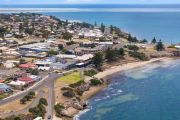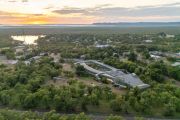
New Forests’ agriculture arm launches $750m raising
New Agriculture, an arm of asset manager New Forests, has launched its first major capital raising, with a $750 million target that it will use to add to high-profile assets it already holds, such as Lawson Grains and the Kimberley Cattle portfolio.
Like its parent platform, the New Agriculture business has moved quickly since its establishment three years ago, with assets under management at about $1.5 billion.

Initial big acquisitions such as Lawson Grains’ 90,000-hectare cropping portfolio from Macquarie or billionaire Hui Wing Mau’s 3 million hectares in the East Kimberley were backed by separate accounts from Canada’s Alberta Investment Management Corporation, or AIMCo.
Now, New Agriculture is throwing the net wider, to create a larger fund aimed at institutions both domestic and offshore, high net worth individuals and large family office types.
In its sights with the fresh raising are an array of farmland types: broad acre row cropping, livestock and horticulture, as well as related agribusiness infrastructure and processing platforms.
Yet, as both New Agriculture head Bruce King and New Forests managing director for Australia and New Zealand David Shelton are quick to note, the agricultural business is more an extension of what the parent platform has been doing for the past two decades than a new direction.
That’s because its investment management style is to take a broad view on its assets, which are to be considered as landscape that can be put to a variety of uses, rather than forever tied to just one commodity.
“I’m not a forester or a farmer, I’m a land manager and a land user, and so we optimise and manage that land,” said Shelton, who has been with New Forests since it was formed, following an early career at CSIRO as an environmental scientist.
It’s an asset management philosophy that is highly suited to Australia and New Zealand, where land use can be versatile, according to Shelton.
“The innovation we have here is that wider mandate – which is a challenge for some investors – but it does allow you to have option value on future land use. Rather than, if something goes from forestry to agriculture, then it might be sold.
“Whereas in our mandates, we would keep those assets and operate them within the forestry business.”
That’s already happened in some of the New Forests’ earlier funds, where a shorter rotation was required for some hardwood timber plantations established in the 1980s, 1990s and 2000s.
“So some of those assets, we have converted them back into grains businesses and vice versa,” Shelton said.
New Forests has close to $12 billion under management globally, the bulk of that is in Australia and New Zealand. Its most recent raising, $600 million, achieved its final close in January for its Australia New Zealand Landscapes and Forestry Fund.
The platform’s early growth was turbocharged by buying Great Southern Group – a managed investment scheme for plantations – out of administration, and the collapsed Tasmanian wood chip miller, Gunns.
Another big step forward came three years ago when Japanese investors Mitsui & Co and Nomura Holdings bought 90 per cent of the fund manager.
Fittingly, the latest fund has been dubbed the New Agriculture Landscape Opportunity Fund or NALOF.
“It’s a diversified portfolio and really importantly, that diversification is built on this whole concept of managing a landscape,” King said.
That broader mandate will allow the fund to look at acquiring “post-gate” assets as well, facilities and infrastructure that are used to process agricultural commodities. The acquisition of Gunns by one of the forestry funds is an earlier example of that.
Another element of the investment philosophy, both for existing funds and NALOF, is the use of carbon removal projects to generate carbon credits, although, as Shelton points out, such projects are not part of the base case for investment.
New Agriculture hopes to have a first close on the NALOF raising by the first quarter of next year. Its launch this month coincides with considerable uncertainty in global trade, triggered by US President Donald Trump’s “liberation day” tariffs.
Most vulnerable to the baseline 10 per cent tariff is Australia’s beef exports to the US, which hit $3.3 billion last year, its single biggest export to that market.
While the weak Australian dollar is expected to blunt some of the impact of the new tariff, Shelton and King are taking the Trump tariff hurdle in their stride and were already looking to diversify New Agriculture’s markets for beef.
“That might be both domestic and to some of our close neighbours in the Asian and South-East Asian region, where they have a natural demand and a taste for the northern beef product,” King said.











